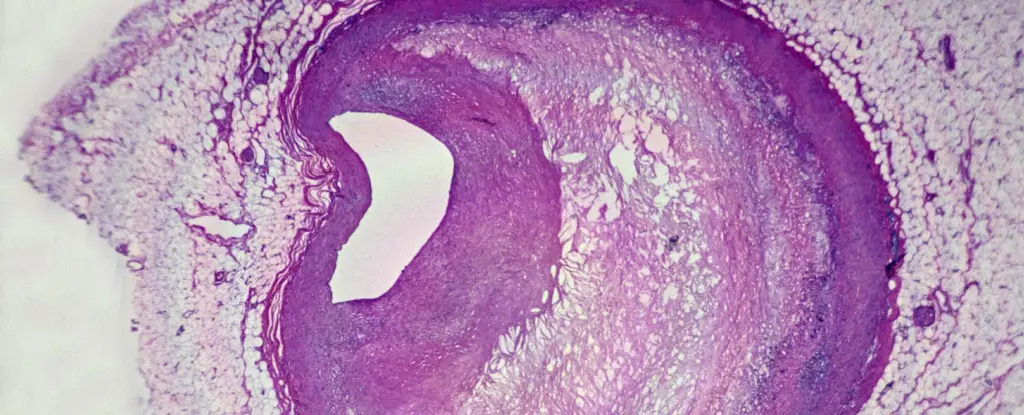In today’s world, the presence of microplastics is becoming an alarming norm, infiltrating our environments, food sources, and even our bodies. These tiny plastic particles, often less than 5 millimeters in size, are generating concern among researchers, particularly regarding their potential impact on human health. Recent studies have unveiled a troubling correlation between microplastics and cardiovascular health, suggesting that these microscopic offenders might indeed have sinister implications for the heart and blood vessels.
A revealing study conducted by Dr. Ross Clark at the University of New Mexico has brought to light the shocking reality of microplastics in arterial plaque. Initial reports show that these plastic particles and their even smaller counterparts, nanoplastics, are present within the human vascular system, which raises substantial questions regarding their role in heart disease.
Linking Microplastics to Cardiovascular Risk
The findings from Dr. Clark’s team demonstrate a worrisome pattern: individuals suffering from cardiovascular ailments exhibit a significantly higher concentration of microplastics in their arterial plaque compared to healthy individuals. Disturbingly, the levels of plastic found in diseased arteries were found to be 16 times greater in asymptomatic individuals and a staggering 51 times higher in patients who had experienced strokes or transient ischemic attacks. This stark contrast highlights the potential link between microplastic accumulation and severe vascular conditions.
The presence of microplastics in the bloodstream warrants scrutiny as researchers attempt to decipher whether these particles are merely present or contribute causally to the worsening of cardiovascular health. This line of inquiry evokes feelings of dread, as the impacts of microplastics on human biology remain largely unresolved, indicating a critical knowledge gap that new research ought to address.
Altering Gene Expression: A Cause for Alarm?
One of the most intriguing aspects of Dr. Clark’s study is the observed changes in gene expression among immune cells within the plaque samples. Cells exposed to higher levels of microplastics displayed altered gene activity, particularly in genes responsible for regulating inflammation. Such alterations could suggest that microplastics may be triggering inflammatory responses in the body, contributing to the deterioration of arterial health—a pathway that could lead to heart attacks and strokes.
The implications of these findings are profound; they indicate that microplastics could be influencing not just the presence of physical plaque but also the biological mechanisms that govern heart health. More critically, researchers underscore the necessity for further studies to fully understand this interaction, which may reveal how microplastics can alter bodily functions at a cellular level.
Scientific Challenges in Researching Microplastics
While researchers like Dr. Clark are pioneering significant studies in the realm of microplastics, the methodology used in their investigations poses challenges. The detection of these tiny particles within human tissue involves complex processes, such as heating samples to extreme temperatures to break down plastic polymers for measurement. This procedure is not without its potential pitfalls; the decomposition of tissue lipids can yield substances that mimic plastic compositions, complicating the analysis.
Despite these concerns, the scientific community remains committed to unraveling the mysteries of microplastics. Innovative techniques and rigorous methodologies will need to continuously evolve if researchers aim to confidently establish links between microplastics and health outcomes, especially in conditions as dire as cardiovascular diseases.
Call to Action: The Need for Continued Research
The weight of the implications surrounding microplastics cannot be overstated. Given the potential disruption to cardiovascular health and the broader public health concerns these findings could entail, there is an urgent need for continued funding and focus on this emerging area of research. The effects of microplastics transcend beyond individual health concerns; they resonate within public discourse surrounding environmental pollution and health safety policies.
Researchers advocate for comprehensive studies to better understand how microplastics interact with human biology. Such explorations extend beyond the confines of arterial plaque; investigations should examine broader impacts across various organ systems and potential long-term effects of chronic exposure.
In a society grappling with plastic pollution, addressing the implications of microplastics on human health is of critical importance. As we confront this modern dilemma, we must prioritize collaborative research endeavors that shed light on the true dangers of microplastics in our bodies, ensuring a healthier future for generations to come.


Leave a Reply